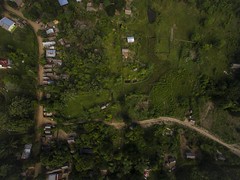Abi Yanga – meeting a dinosaur
I’m finally over the inevitable snowdrift of emails any trip away guarantees and starting to find a few moments to work with the stills and film captured in PNG during October. Being a herpetologist I usually go straight to the frog, snake and lizard images, diving into Lightroom and the literature but this time I went straight for something a little different. My love-affair with herpetology stems in a large part to my childhood obsession with dinosaurs. As any evolutionary biologist will tell you, we still coexist with dinosaurs, but not the lizards that my childhood mind made the logical connection to, but birds. The problem is, birds are generally small flitty things that fly and are delicate. That’s not very dinosaurish really. For the most part, that’s true but there are exceptions and for me the best extant example is the cassowary. Not only do they live in the deepest rainforest, but they are big, gloriously menacing at close quarters and simply exquisite.

Head thrown forward and apparently every air-sac in it’s body inflated the dwarf cassowary calls. Photo: James Reardon
No encounter with wildlife is without some effect on most of us, but having the opportunity to meet animals that are both shy, elusive, and a little bit dangerous, on their own terms is a special privilege indeed.
The dwarf cassowary (Casuarius bennetti) of New Guinea is a near threatened species of large ratite, so the same family as the ostrich of Africa, rhea of South America, emu of Australia and little kiwi of New Zealand. Standing at a little over a meter at the shoulder these are birds that genuinely look you in the eye, and whilst they are a widely hunted species across New Guinea, their powerful legs equipped with a long defensive claw means they’re quite able to defend themselves from potential predators, meaning man. Just look at them: they’re dinosaur feet.
Meeting one is, as I keep saying, like meeting a small dinosaur and an experience that will stay with me. They’re also critical to forest health performing a function that no other species can achieve. Without cassowary, the forests of New Guinea would not be as they are. I hope you enjoy this little sequence of footage, which will eventually become part of a larger project for the Wildlife Conservation Society and the people of Ikundi in PNG.
Support the (extremely challenging) conservation efforts to secure the future for cassowary and other threatened species in PNG at: http://www.wcs.org/where-we-work/asia/papua-new-guinea.aspx











